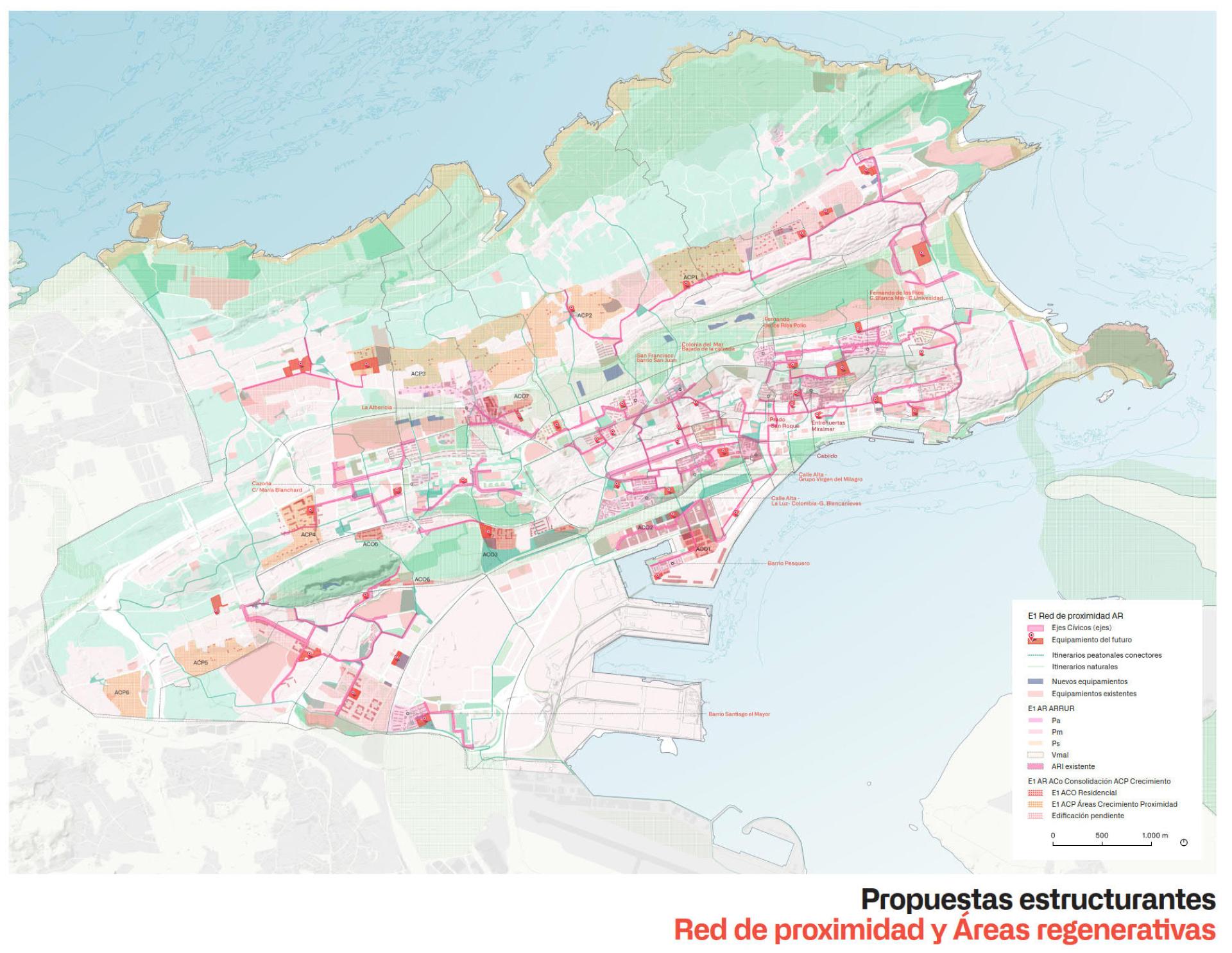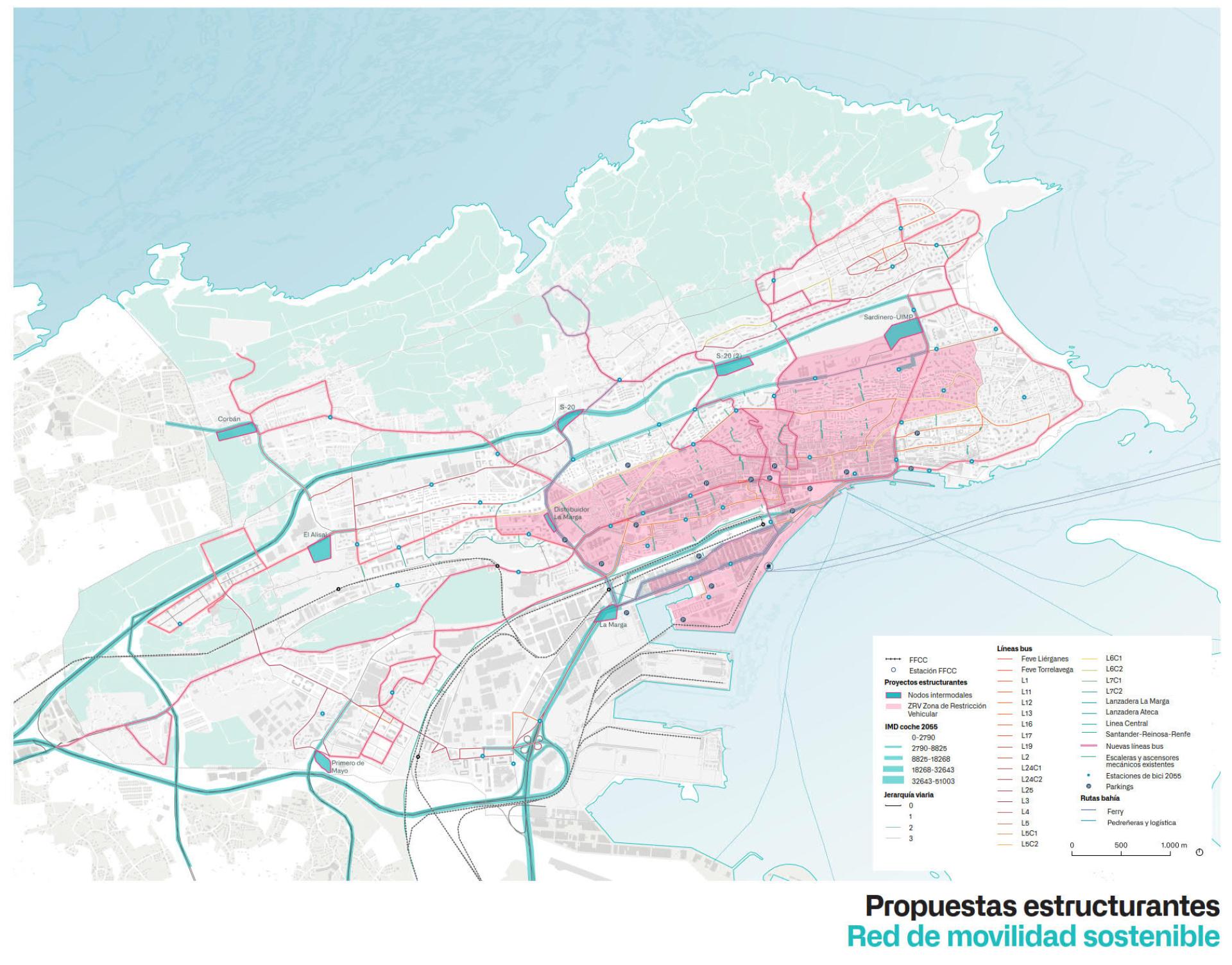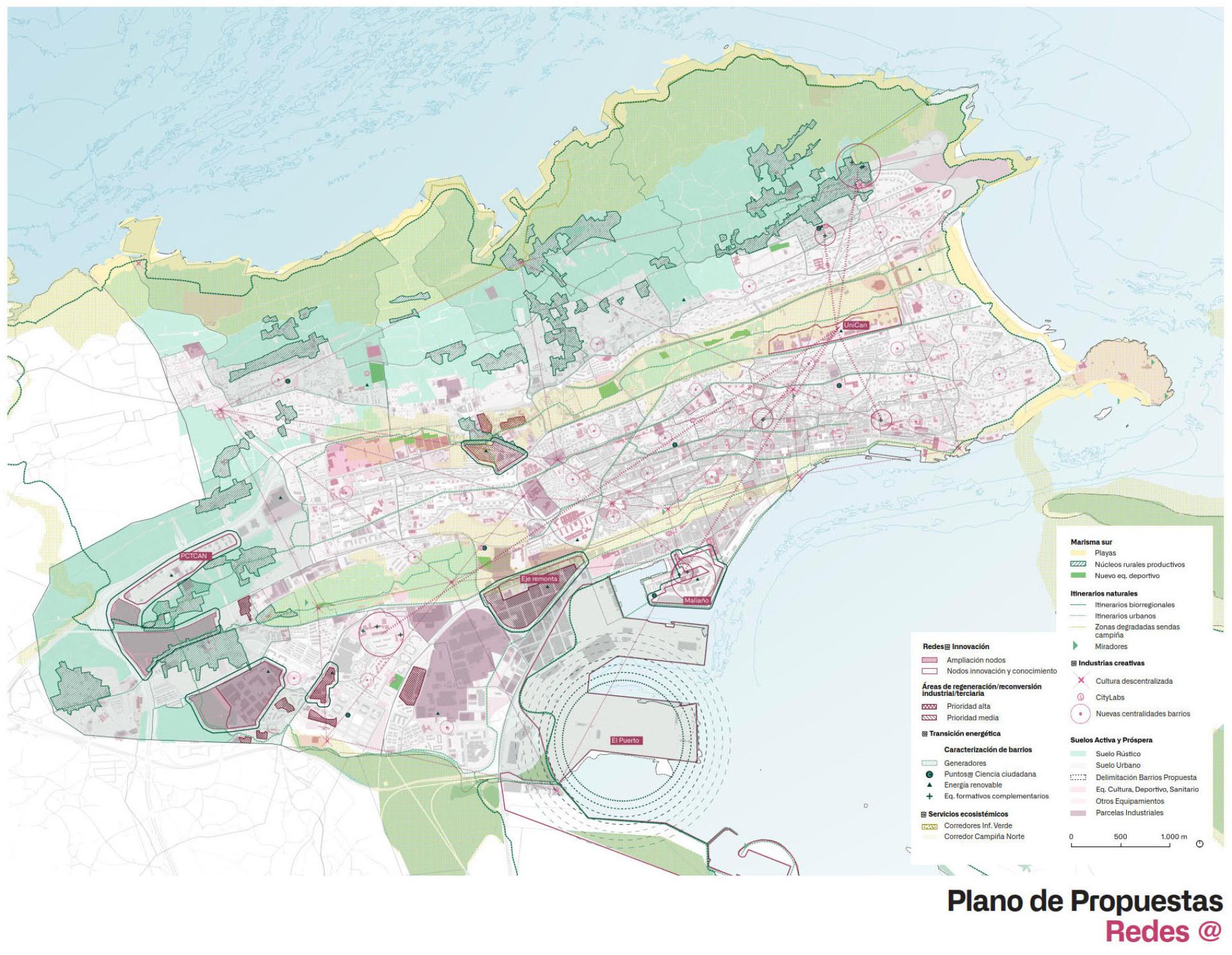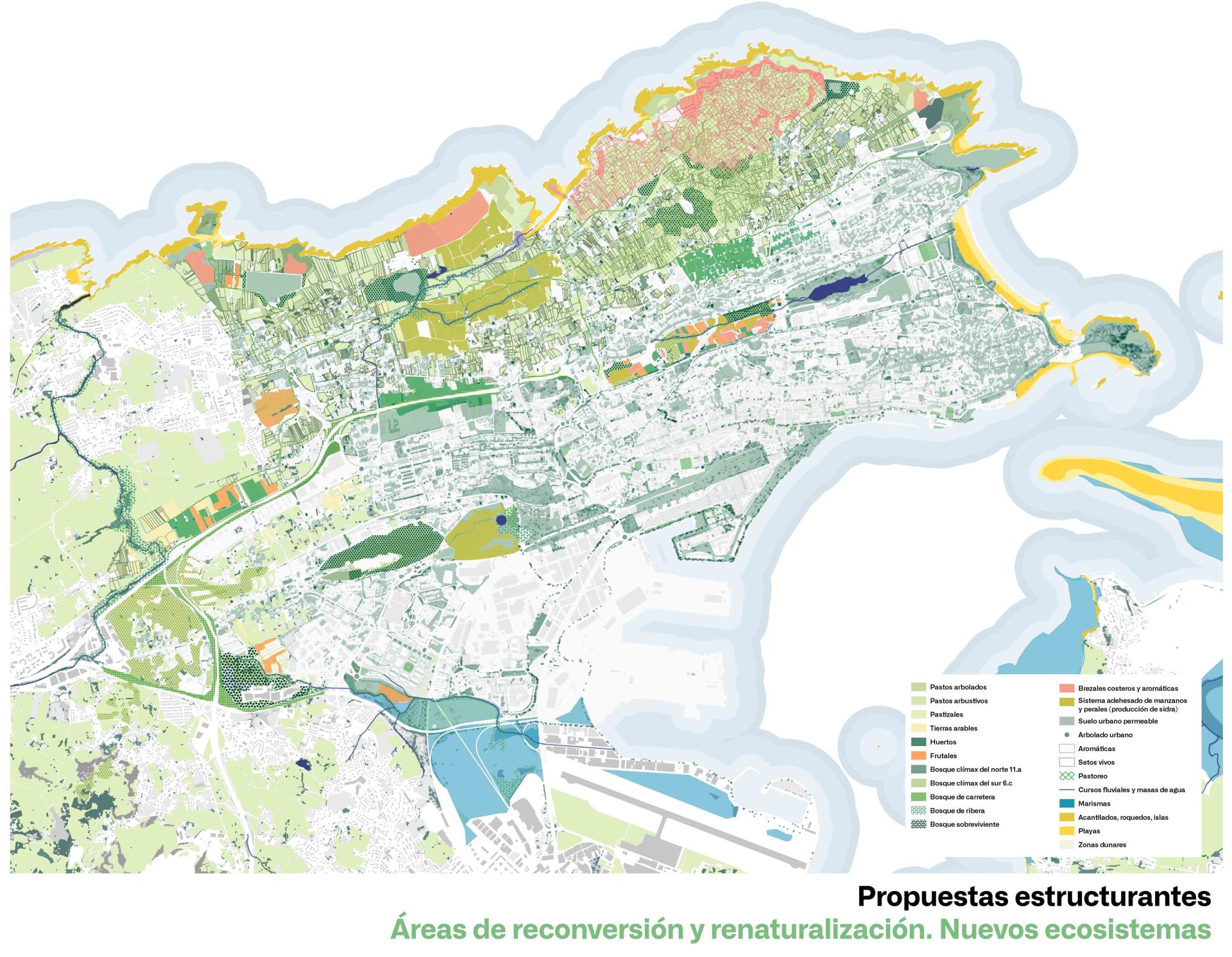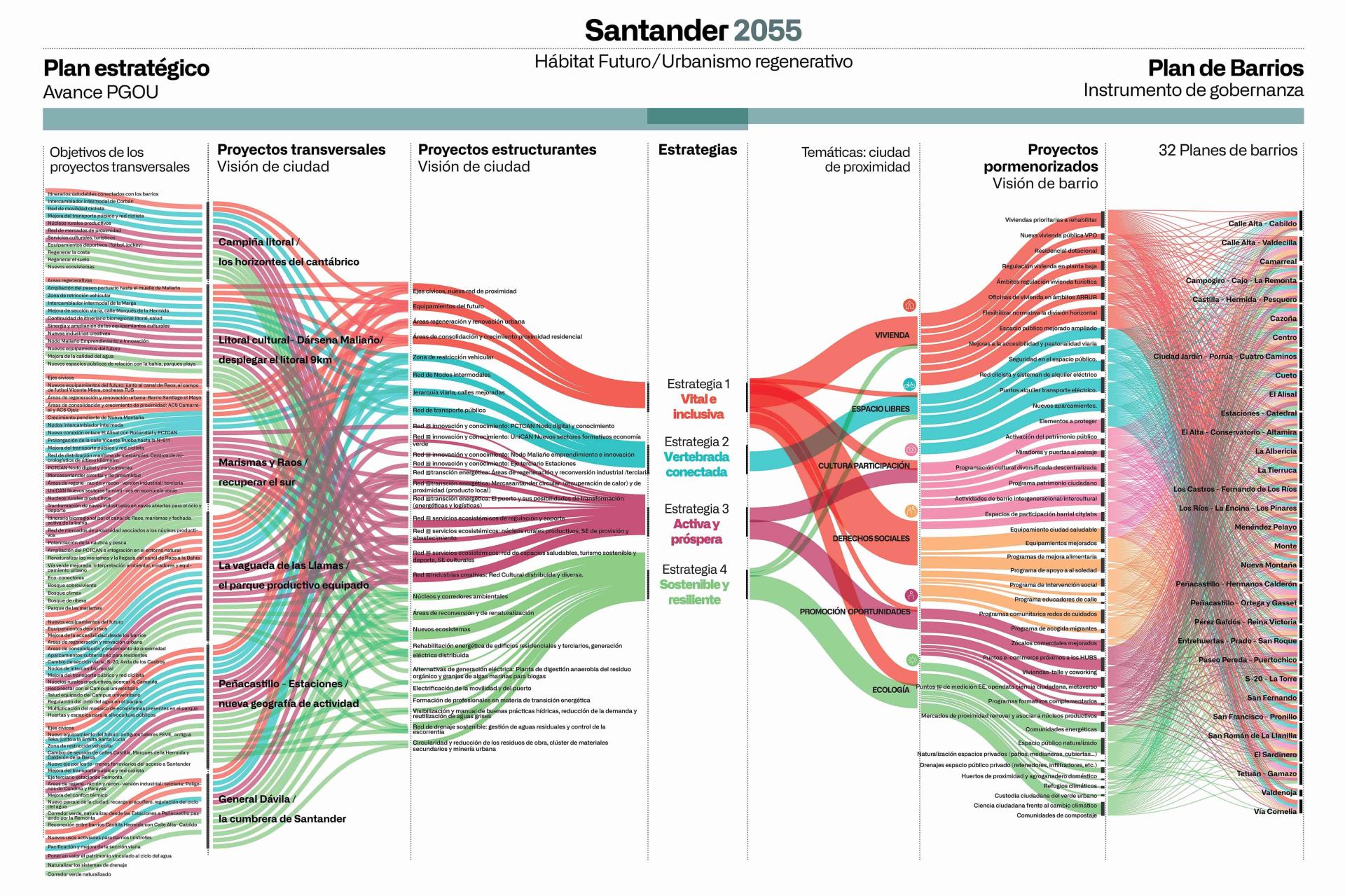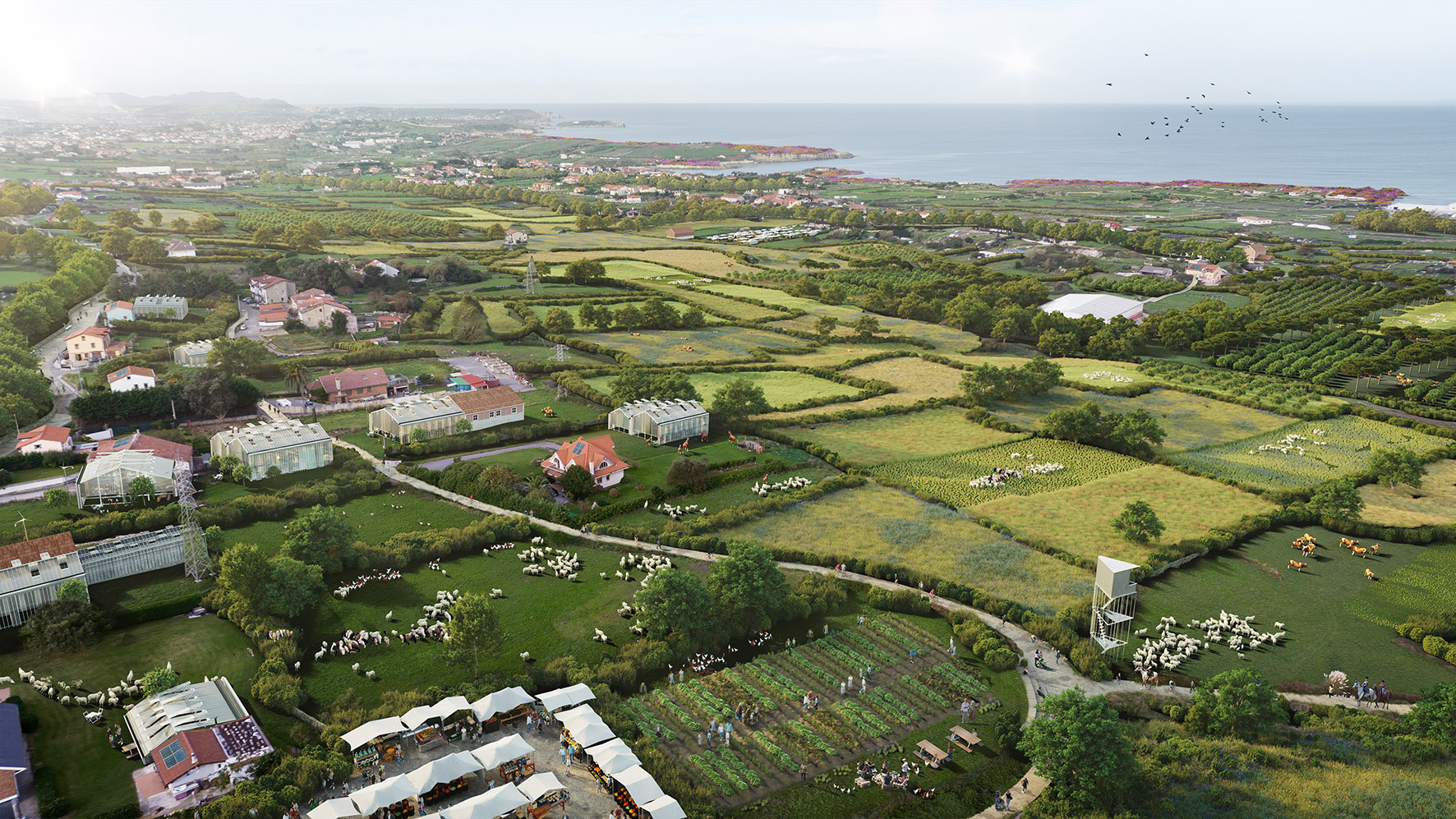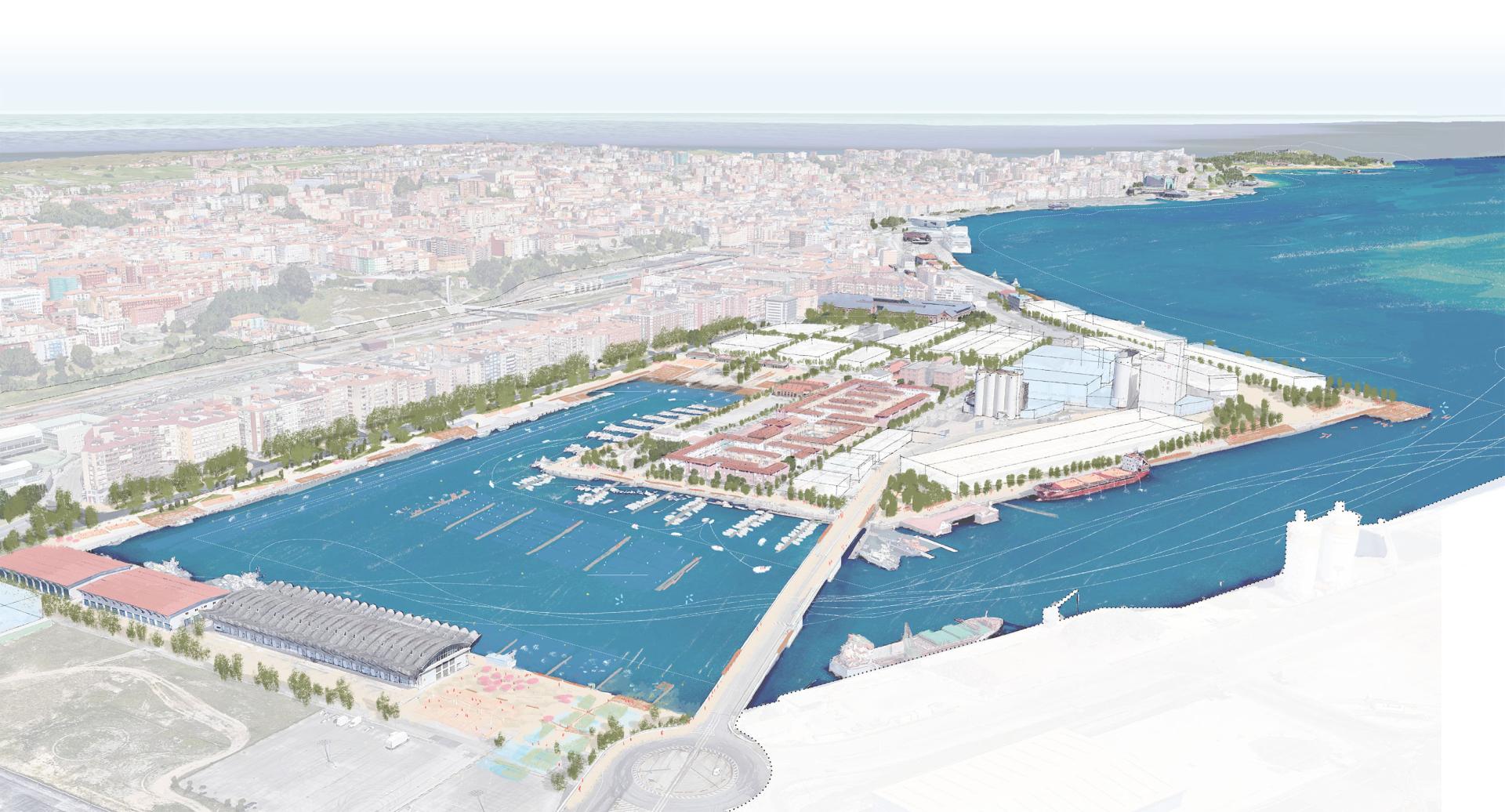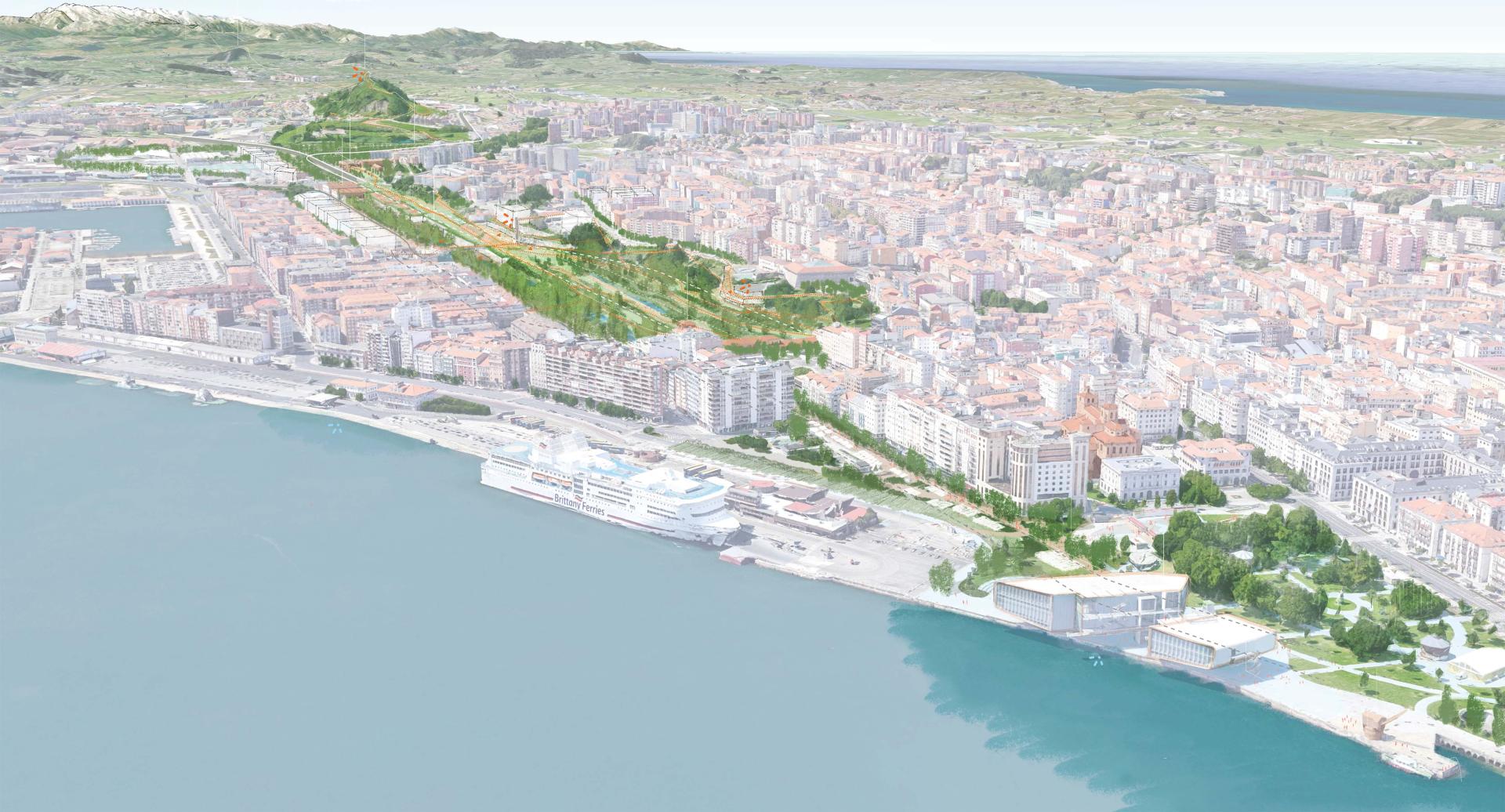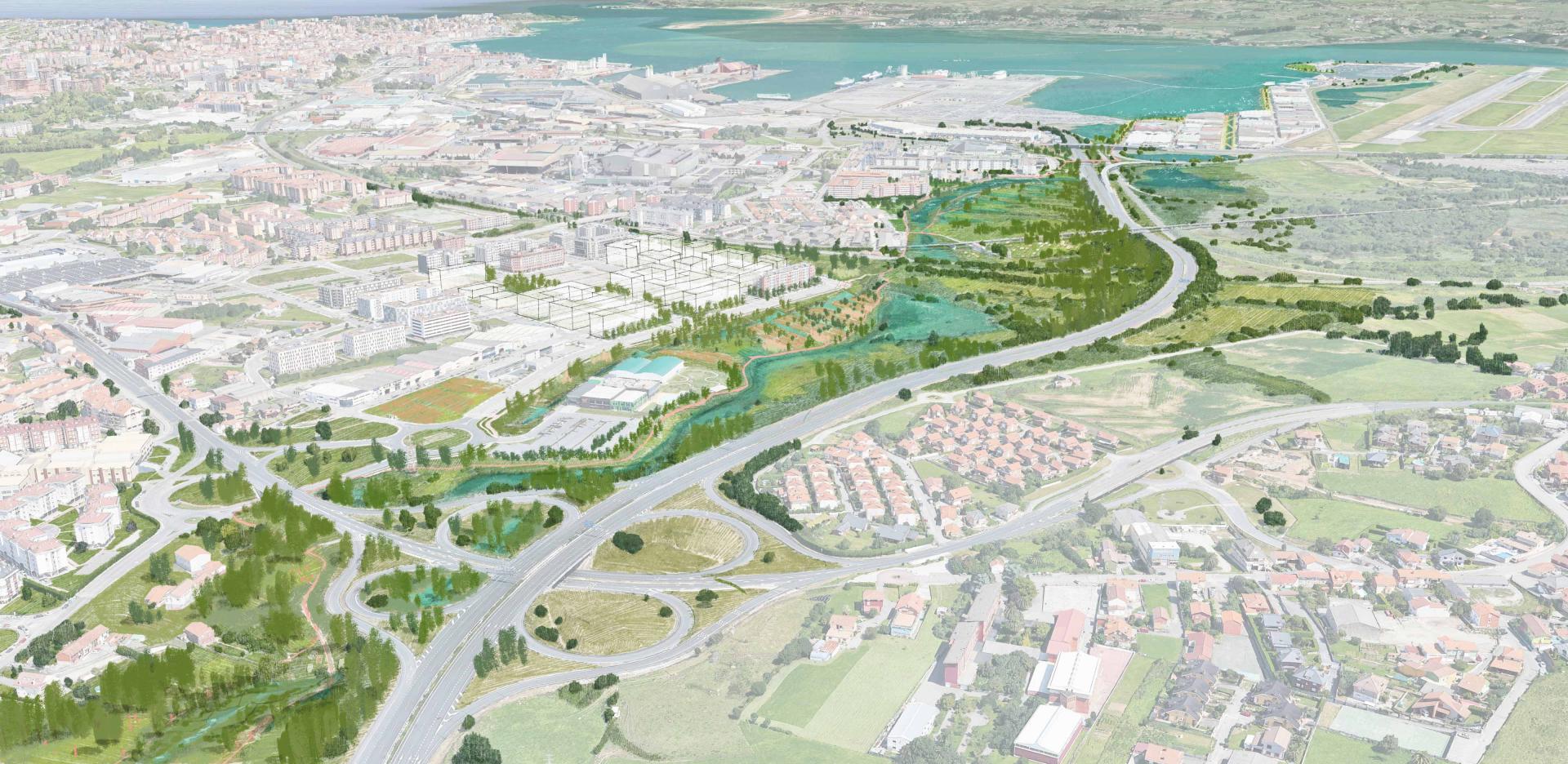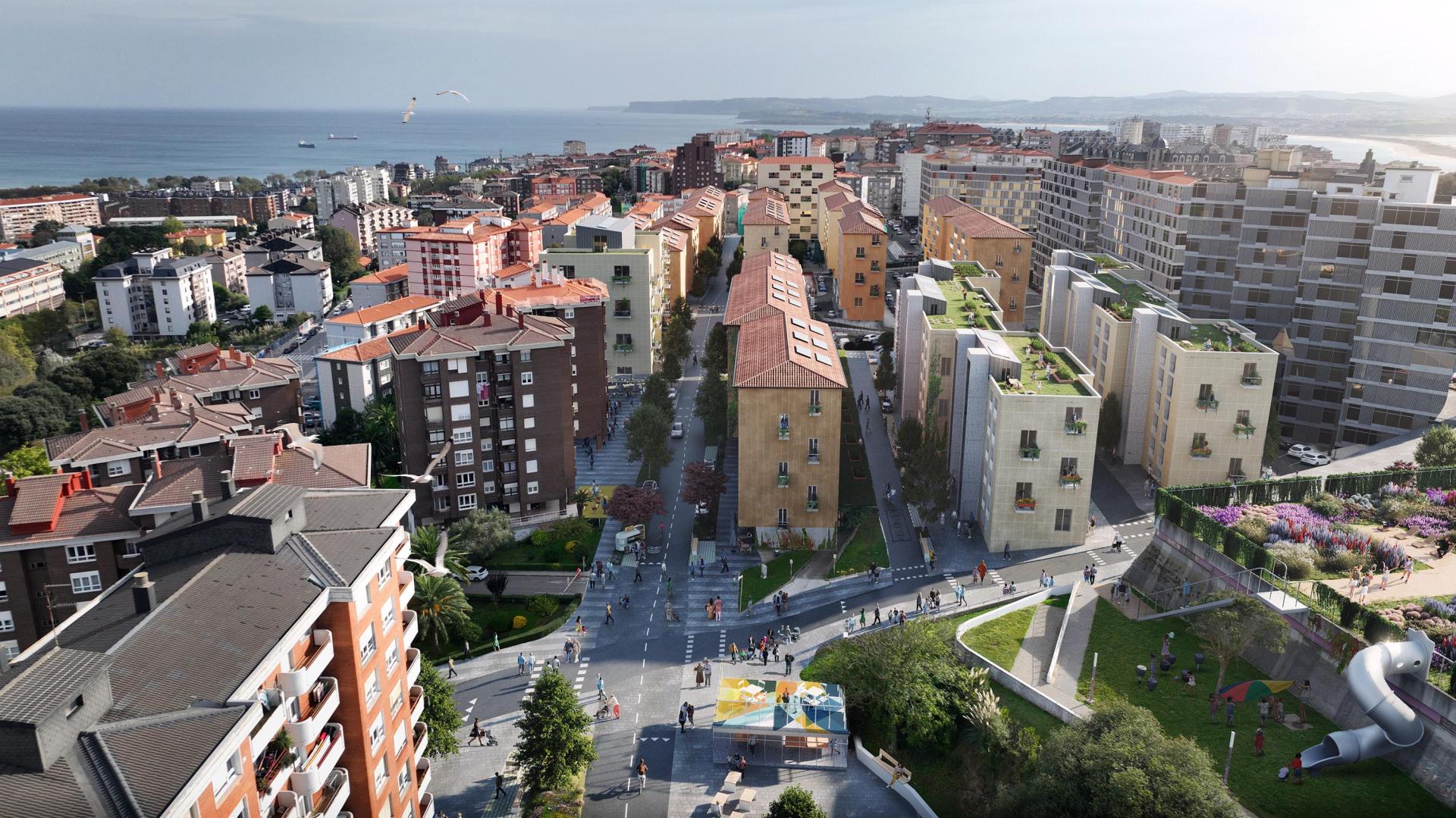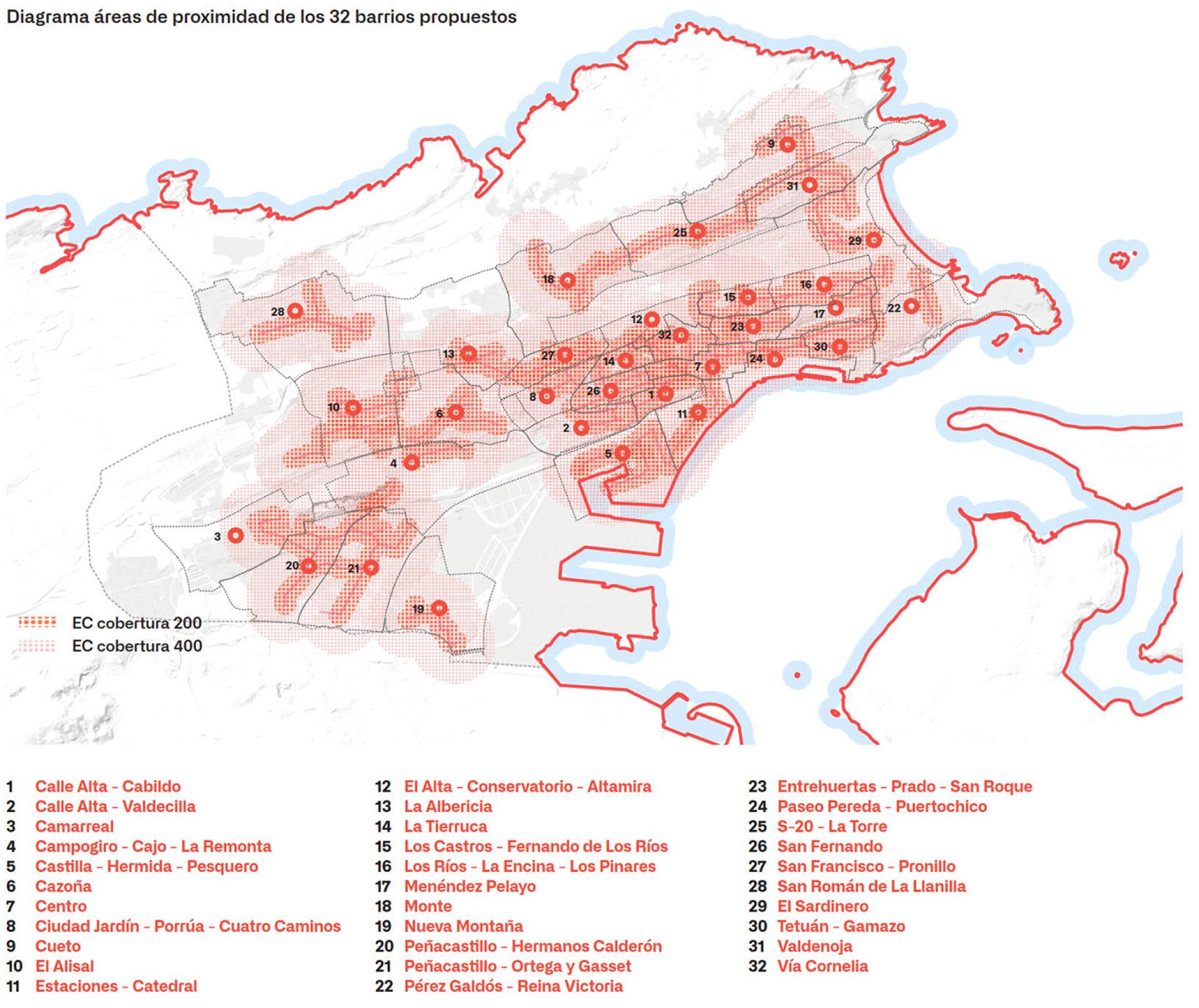Santander, Hábitat Futuro
Basic information
Project Title
Santander, Hábitat Futuro
Full project title
Santander, Hábitat Futuro: regenerative urbanism as a City Model for Santander 2055
Category
Shaping a circular industrial ecosystem and supporting life-cycle thinking
Project Description
"Santander, Habitat Futuro" is based on a thorough analysis of the conditions of the territory, its needs and opportunities, which is articulated through four strategies to improve the city, six cross-cutting projects and 32 neighborhood plans. It is an open model, based on regenerative urbanism, which, based on innovation and citizen participation, prepares and adapts the territory and its ecological, economic and social conditions for the different scenarios to come.
Geographical Scope
Local
Project Region
Santander, Spain
Urban or rural issues
It addresses urban-rural linkages
Physical or other transformations
It refers to a physical transformation of the built environment (hard investment)
EU Programme or fund
No
Description of the project
Summary
Santander, Habitat Futuro (SHF) is the City Model for Santander in 2055. A project that starts from a deep analysis of the conditions of the territory, its needs and opportunities, and a process of listening and citizen participation initiated in 2020, #ParticipaPGS. It is articulated through four strategies to improve the city, six cross-cutting projects and 32 neighborhood plans.
SHF defines an open model that, based on innovation and citizen participation, prepares and adapts the territory and its ecological, economic and social conditions for the different scenarios to come. It is based on regenerative urbanism, a working methodology that transforms the ecological, economic and social models on which cities have developed, defining new systems that ensure compatibility between economic and social prosperity and nature, enhancing their values and transforming everything necessary to direct the commitment of the different social, economic and political agents towards the common goal of achieving a circular, sustainable, resilient, vertebrate, prosperous, vital and inclusive city.
At a critical time for our societies and cities, SHF is a proposal that is aware of the global situation and connects with the local reality through governance based on participatory innovation, learning and collective intelligence.
SHF defines an open model that, based on innovation and citizen participation, prepares and adapts the territory and its ecological, economic and social conditions for the different scenarios to come. It is based on regenerative urbanism, a working methodology that transforms the ecological, economic and social models on which cities have developed, defining new systems that ensure compatibility between economic and social prosperity and nature, enhancing their values and transforming everything necessary to direct the commitment of the different social, economic and political agents towards the common goal of achieving a circular, sustainable, resilient, vertebrate, prosperous, vital and inclusive city.
At a critical time for our societies and cities, SHF is a proposal that is aware of the global situation and connects with the local reality through governance based on participatory innovation, learning and collective intelligence.
Key objectives for sustainability
The regenerative urbanism of "Santander, Habitat Futuro" reconceptualizes a new prosperity conscious of planetary limits by adjusting urban metabolism to that of the biosphere. It makes visible our eco-dependence in the different areas of human life by collectively redefining the socio-economic standards of cities. It invites us to restructure and reevaluate our organizational models, to relocate primary functions linked to the promotion of self-sufficiency strategies (energy, food, etc.) and to reuse and recycle elements (soil, water, fabrics, buildings, etc.) to multiply the services they provide. It implies new ways of improving the environment by establishing symbiotic relationships and reconnecting cities with the natural systems on which they depend. It recognizes the city as an integrated system in which it is not possible to act in isolation. It develops a circular metabolism in the city, integrating sustainable mobility, the increase of local food production, the reduction of greenhouse gas emissions, the retention and fixation of atmospheric carbon, the saving of water and the increase of biodiversity. Not only minimizing its environmental impact, but actively improving and regenerating the productive capacity of the ecosystems on which it depends.
Key objectives for aesthetics and quality
The regenerative urbanism of "Santander, Habitat Futuro" aims at a model that replaces the paradigm of the domination of nature of the techno-scientific complex. It places care and the natural environment at the center as sustenance for existence and redefines the proximity networks for a city that generates life, harmonized with the different stages and needs of life, aware of the interdependence between the different human lives. The emphasis is on knowing and strengthening the connections between the various elements involved, for which weaving participation and socioeconomic empowerment is indispensable. This activates and consolidates parts of the system such as local economies and neighborhood cohesion, and lays the foundations for a redistributive and regenerative culture.
Key objectives for inclusion
The regenerative urbanism of "Santander, Habitat Futuro" identifies different future scenarios that contribute to readjust and reprogram the plan's implementation actions over time and creates multilevel governance spaces to coordinate adaptive and evolutionary processes. In that sense, it promotes confidence in the future of cities and societies by strengthening a community's ability to thrive during times of instability and to adapt, organize and grow in response to change or disruption.
To this end, it defines a Neighborhood Plan, a symbiosis between a strategic planning instrument and a tool for citizen participation that not only translates city strategies into multiple neighborhood projects, but also proposes tools for governance and direct democracy in order to build the city of proximity in a shared manner.
The Santander Neighborhood Plan is a planning and governance instrument for the 32 neighborhoods into which the city has been divided. It is a complete x-ray that offers each of the neighborhoods a plan to evolve towards the city of proximity, a flexible, open plan, which should be debated through spaces for technical and citizen participation.
To this end, it defines a Neighborhood Plan, a symbiosis between a strategic planning instrument and a tool for citizen participation that not only translates city strategies into multiple neighborhood projects, but also proposes tools for governance and direct democracy in order to build the city of proximity in a shared manner.
The Santander Neighborhood Plan is a planning and governance instrument for the 32 neighborhoods into which the city has been divided. It is a complete x-ray that offers each of the neighborhoods a plan to evolve towards the city of proximity, a flexible, open plan, which should be debated through spaces for technical and citizen participation.
Results in relation to category
The project is a City Model to be implemented between now and 2055. Urban projects of this scale do not generate impacts immediately (apart from communication and awareness-raising), but over the course of their implementation and for decades. During the process, the project will have enormous impacts on the citizens directly and indirectly, as it will improve the quality of life of the people of Santander in the most effective way, as this is how its methodology has been designed. The plan rebuilds and, therefore, reconnects nature in the city and creates neighborhood identity through one of its pillars, the Neighborhood Plan. In addition, it prioritizes the needs of the most vulnerable people as shown in the analysis and proposals of Strategy 1 "Vital and Inclusive" and creates a true circular economy for the entire productive sector as shown in Strategy 2 "Vertebrate and Connected", Strategy 3 "Active and Prosperous" and Strategy 4 "Sustainable and Resilient".
How Citizens benefit
Santander has been reflecting on its future for some time now through the #ParticipaPGS citizen consultation: a public governance process initiated in 2020 that sought, in turn, the fulfillment of the Sustainable Development Goals (SDGs) and their targets. Specifically, the goals and strategies related to SDG 11 Sustainable Cities and Communities, which aims to make cities and human settlements inclusive, safe, resilient and sustainable. Along the same lines, the consultation took into account the Spanish Urban Agenda (AUE), which coincides with the achievement of these SDGs.
The participatory process was open to all Santander citizens through different channels. Its ultimate goal was to learn first-hand about the specific needs of the population, in order to contribute to the proposals that would subsequently develop the requested City Model. Its methodology and content have been reflected in the document: "Public Citizen Consultation 2020".
The participatory process was open to all Santander citizens through different channels. Its ultimate goal was to learn first-hand about the specific needs of the population, in order to contribute to the proposals that would subsequently develop the requested City Model. Its methodology and content have been reflected in the document: "Public Citizen Consultation 2020".
Physical or other transformations
It refers to a physical transformation of the built environment (hard investment)
Innovative character
The regenerative urbanism of "Santander, Habitat Futuro" prioritizes the qualitative, specific and personalized approach that considers each place and built environment as unique, moving towards a circular and fair model. It recognizes that data science and artificial intelligence are optimal technologies for managing the complexity of urban dynamics, and that, adopted from a qualitative perspective, they provide tailor-made tools, reprogrammable over time, and capable of favoring collective intelligence, and thus accelerating the transition towards the new model.
Disciplines/knowledge reflected
The regenerative urbanism of "Santander, Habitat Futuro" is trans-scalar and redundant, it multiplies and connects projects with common objectives from the different disciplines and scales that affect the city, in order to increase its resilience. The project is the result of the interaction of diverse disciplines: architecture, urban planning, communication, economics, mobility, energy, waste management, water management, ecology, history and even graphic design, which contribute particular studies on the geography and territory of Santander that are incorporated as part of the regeneration to move towards a circular, sustainable, resilient, vertebrate, prosperous, vital and inclusive city.
Methodology used
"Santander, Habitat Futuro" is based on regenerative urbanism, a work methodology that seeks to restore balance to the urban territory by designing systems that allow its adaptation and transformation. At a critical time for our societies and cities, it is a proposal aware of the limits and needs, but also of the opportunities that arise in this context. It is, therefore, a model connected to the local and global situation that, at the same time, serves to articulate different realities through a governance based on lean urbanism, a form of participatory innovation that proposes a development based on collective learning and intelligence. Thus, regenerative urbanism implies a transformation of the ecological, economic and social models on which cities have developed and defines systems that do not consume available resources, but rather generate new ones that ensure compatibility between economic and social prosperity and nature.
How stakeholders are engaged
The City Model of "Santander Habitat, Future" is based on a previous process, the public consultation #ParticipaPGS, in which many citizens participated, with more than 1,800 opinions. During this process, interviews and meetings were held with various departments of the Santander City Council. The process also included the participation of the Directorate General of Urban Planning of the Government of Cantabria, responsible for approving urban planning documents in the region, and the Department of Cartography, which provided information and their point of view on the technical aspects that the model should include.
Global challenges
Although they only occupy 3% of the earth's surface, cities have a high ecological impact due to the fact that they consume 60% of resources and generate waste and pollution, causing more than 70% of greenhouse gas emissions on a global scale, as the Sustainable Development Goals warn. They also concentrate the highest levels of inequality and polarization. In our globalized economic system, cities aspire to be nodes of global relevance and compete to attract investments that make them grow, but today we are aware that to face all the current crises (and those yet to come) it is necessary to transform the economic model and, therefore, the urban model.
For dealing with this situation, ""Santander, Habitat Futuro"" proposes a utopian pragmatism: to move from the traditional linear economic political model to another model that is more just and equitable, socially and environmentally, through processes of valuation and circularity. This more holistic and integrative vision makes it possible to make decisions on a local scale, without losing the relationship with global impacts. It also enables rapid transformations that lead to the reduction of extractivism, externalities and emissions, so that the needs of all people can be met, while favoring the restoration and regeneration of ecosystem functioning. It focuses on care versus growth, on the regenerative versus the speculative, on the ordinary versus the extraordinary, on a future that began long ago; on concrete projects and actions, not on abstract classifications that affect material living conditions and eliminate future possibilities, and promotes alternatives that address the ecosocial emergency, leaving no one behind.
For dealing with this situation, ""Santander, Habitat Futuro"" proposes a utopian pragmatism: to move from the traditional linear economic political model to another model that is more just and equitable, socially and environmentally, through processes of valuation and circularity. This more holistic and integrative vision makes it possible to make decisions on a local scale, without losing the relationship with global impacts. It also enables rapid transformations that lead to the reduction of extractivism, externalities and emissions, so that the needs of all people can be met, while favoring the restoration and regeneration of ecosystem functioning. It focuses on care versus growth, on the regenerative versus the speculative, on the ordinary versus the extraordinary, on a future that began long ago; on concrete projects and actions, not on abstract classifications that affect material living conditions and eliminate future possibilities, and promotes alternatives that address the ecosocial emergency, leaving no one behind.
Learning transferred to other parties
Although "Santander, Habitat Futuro" is a model designed specifically for Santander, the intention is that it can serve as a reference, with the pertinent adaptations, for other medium-sized cities in the world.
Medium-sized cities represent a link between rural and urban lifestyles. They are commercial and cultural epicenters of large territories and play the role of serving as development nodes, providing basic services and institutional spaces. This intermediary role makes them an archetype that includes economic, social, cultural and environmental governance. For that reason, they must play a key role in the correction of inequalities derived from the current urbanization, too focused on large cities.
As a whole, they constitute an opportunity to develop regenerative urbanism in them, since they usually enjoy a great urban diversity and this diversity is a key condition for adaptation and resilience. In addition, most of them maintain the capacity to structure and cohere the urban system and bioregional links. Also, compared to large cities, which are more prone to agglomeration economies, it is easier to promote aspects of circular economy and multilevel governance networks with a greater impact on the articulation of strategies aimed at achieving territorial balance and a dignified life. In these cities, the human scale, the value of proximity and the inclusive dimension are essential attributes of a model that is articulated from the neighborhoods.
Medium-sized cities represent a link between rural and urban lifestyles. They are commercial and cultural epicenters of large territories and play the role of serving as development nodes, providing basic services and institutional spaces. This intermediary role makes them an archetype that includes economic, social, cultural and environmental governance. For that reason, they must play a key role in the correction of inequalities derived from the current urbanization, too focused on large cities.
As a whole, they constitute an opportunity to develop regenerative urbanism in them, since they usually enjoy a great urban diversity and this diversity is a key condition for adaptation and resilience. In addition, most of them maintain the capacity to structure and cohere the urban system and bioregional links. Also, compared to large cities, which are more prone to agglomeration economies, it is easier to promote aspects of circular economy and multilevel governance networks with a greater impact on the articulation of strategies aimed at achieving territorial balance and a dignified life. In these cities, the human scale, the value of proximity and the inclusive dimension are essential attributes of a model that is articulated from the neighborhoods.
Keywords
Regenerative Urbanism
Trans-scalar
Climate Change
Participatory governance
Circular economy


